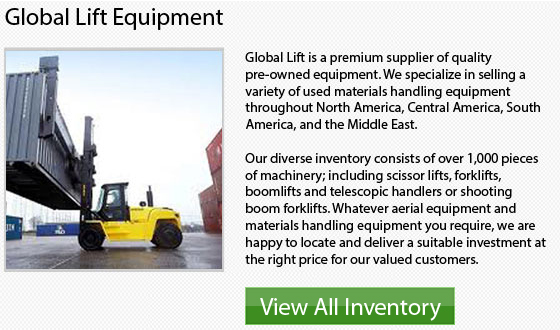
CAT Telescopic Forklifts Fort Worth
A telescopic handler or telehandler is a machinery that is popular in the agriculture and construction businesses. These machines are similar in appearance and function to a forklift or a lift truck but are actually more similar to a crane rather than a forklift. The telehandler offers improved versatility of a single telescopic boom which could extend forwards and upwards from the vehicle. The operator could attach different types of attachments on the boom's end. Some of the most common attachments include: a muck grab, a bucket, a lift table or pallet forks.
To be able to transport cargo through areas which are normally not reachable for a typical forklift. The telehandler uses pallet forks as their most common attachment. Like for example, telehandlers can move cargo to and from locations which are not typically reachable by regular forklift units. These devices could also remove palletized loads from inside a trailer and place these loads in high areas, like on rooftops for instance. Previously, this situation mentioned above will need a crane. Cranes could be really pricey to use and not always a practical or time-efficient option.
Another advantage is also the telehandlers largest limitation: as the boom extends or raises when the machine is bearing a load, it also acts as a lever and causes the vehicle to become somewhat unstable, despite the rear counterweights. This translates to the lifting capacity decreasing quickly as the working radius increases. The working radius is the distance between the center of the load and the front of the wheels.
Like for example, a vehicle that has a 5000 lb. capacity with the boom retracted may be able to safely raise only as much as 400 lb. once it is fully extended with a low boom angle. The same model with a 5000 pound lift capacity that has the boom retracted might be able to easily support as much as 10,000 lb. with the boom raised up to 70.
England initially pioneered the telehandler within Horley, Surrey. The Matbro Company developed these machines from their articulated cross country forestry forklifts. Initially, they had a centrally mounted boom design on the front portion. This positioned the driver's cab on the rear portion of the machine, as in the Teleram 40 model. The rigid chassis design with a rear mounted boom and the cab situated on the side has ever since become more popular.
- Fantuzzi Container Forklift Fort Worth
Rail / Intermodal Reach Stacker Rail or Intermodal Reach Stackers manufactured by Fantuzzi would make fast work of difficult applications. The distances between the first and second rail will drastically vary depending on the task.... More - Taylor Rough Terrain Forklift Fort Worth
Rough Terrain Lift Truck Training Class VII or rough terrain forklifts are often used in logging and forestry projects and are common on construction sites. They are the popular option for outdoor settings which depend... More - JCB Zoom Boom Fort Worth
Raw Materials The cab, body, boom and frame of a telescoping boom rough terrain forklift are generally manufactured by a lift truck manufacturer. The most common material used for these subassemblies is steel, because of... More - Potain Self Erect Cranes Fort Worth
Tower cranes are being utilized often for big building construction projects. They are necessary for the heavy lifting and positioning of materials and machinery. Tower cranes provide a different design that offers a lot of... More - Yale LP Forklifts Fort Worth
You'll notice specific types and classes of forklifts available on the market. Once you have become familiar with the numerous models, it is easier to understand you lift truck application needs prior to choosing one.... More








